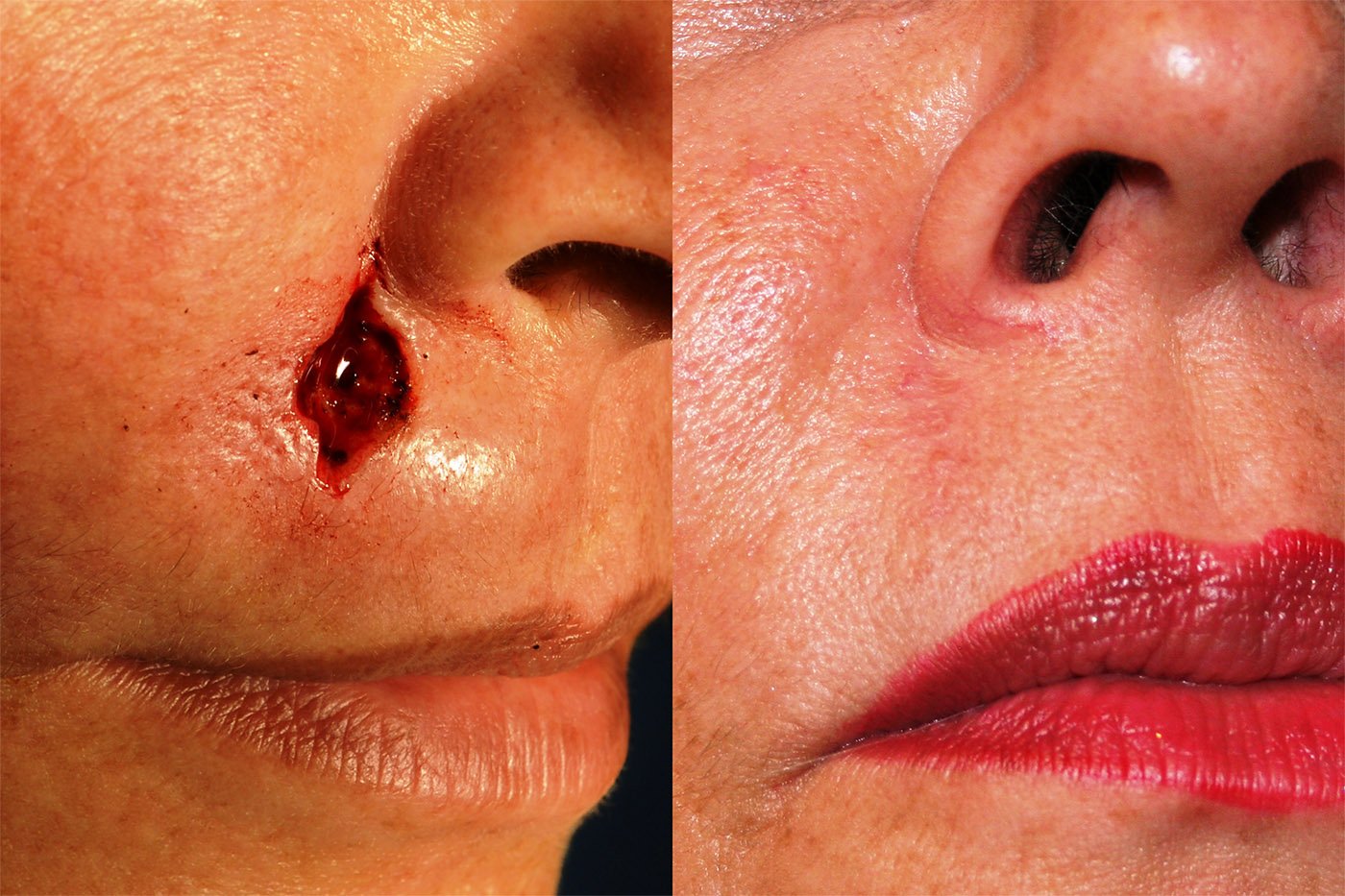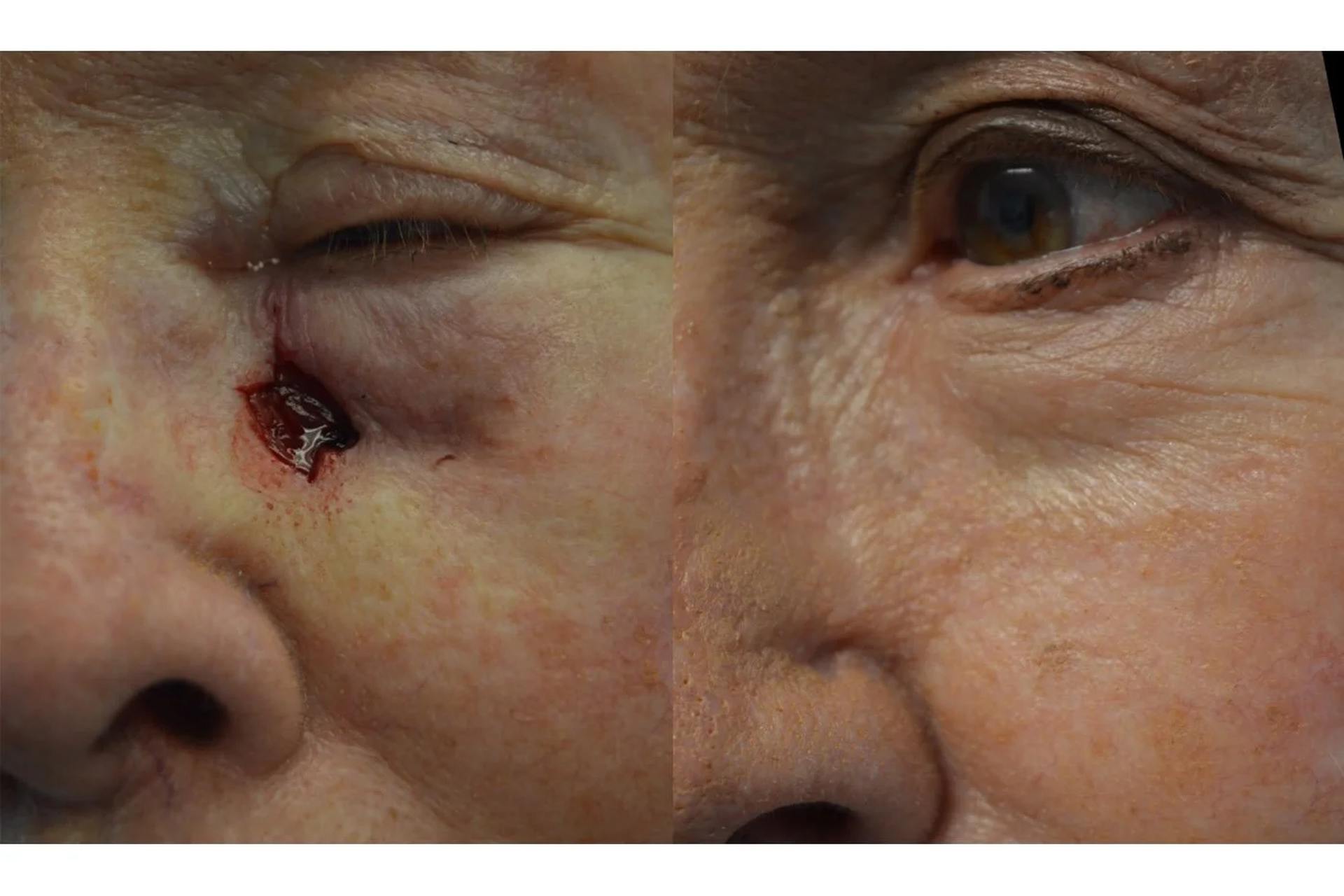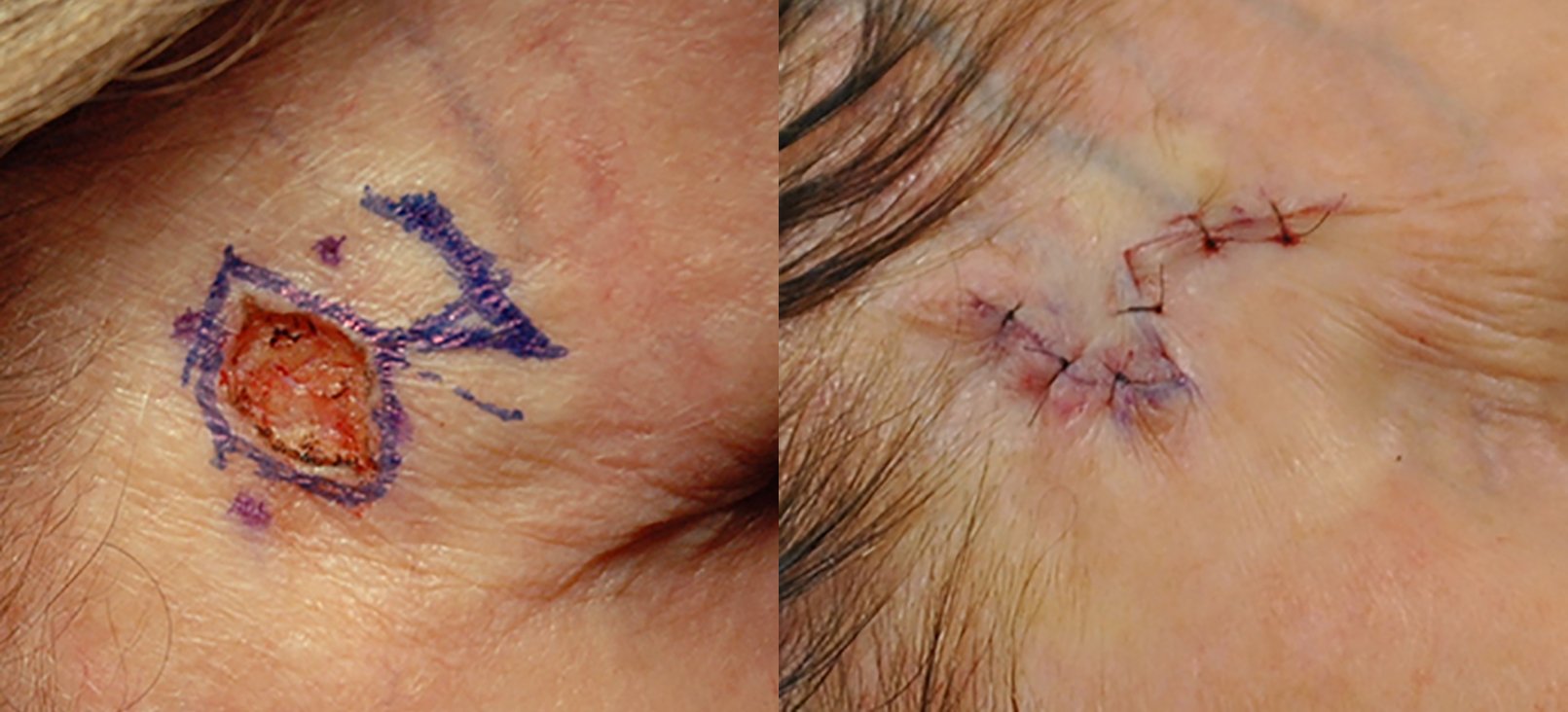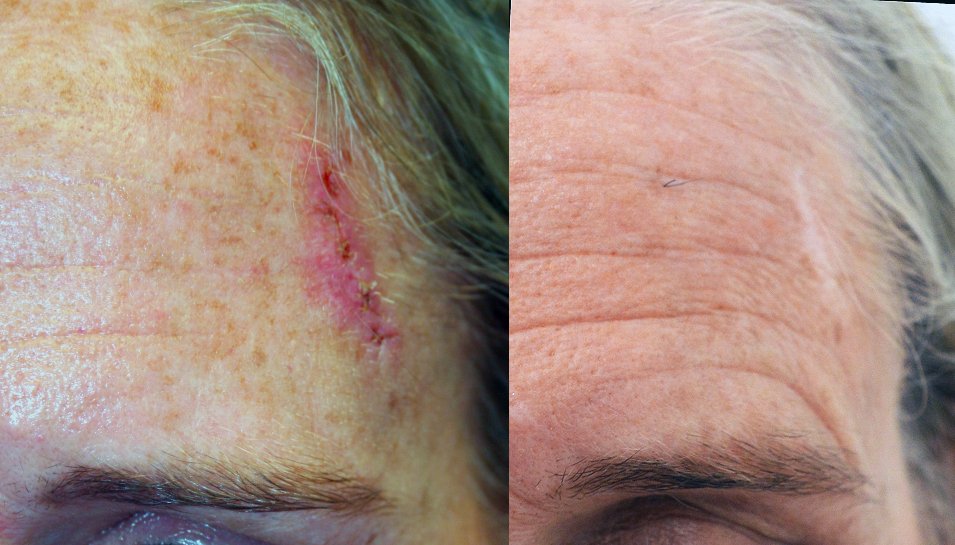Skin Cancer Surgery in Norwalk, Connecticut
Conveniently Located: Every patient is a VIP. For your skin cancer surgery appointment, you will see Dr. Kirwan himself at every single appointment. Our Norwalk, CT location is conveniently located in between Manhattan, New York and New Haven, Connecticut. Patients regularly visit from across Connecticut (Stamford, Greenwich, Stratford, Fairfield, Westport, Bridgeport, Darien, New Canaan, Trumbull), New York ( Manhattan, NYC, Larchmont, Mamaroneck, New Rochelle, Port Chester, White Plains, Harrison), New Jersey and other neighboring cities/towns for their skin cancer surgery and other plastic surgery procedures. Our office is close to all of the New York Airports for patients who are coming from out-of-state or other countries.
Key Highlights
- Common skin cancers are basal cell carcinomas and squamous cell carcinomas.
- The majority of these cancers are seen in the exposed skin of the scalp, face, nose, ears, lower lip, scalp, forearms, hands and lower legs
- Malignant melanoma is less common but generally a more aggressive skin cancer requiring a wider skin excision. Malignant melanoma is also related to sun exposure but occurs in non-exposed skin as well.
- Skin cancers are more frequent in light skinned individuals who have significant sun damage
- Skin cancer surgery is usually performed by simply removing the lesion with a rim of normal skin and then checking the tissue, after the procedure, to ensure that no skin cancer was left behind.
- Moh’s surgery is a technique that involves removing concentric tissue layers around the cancer and examining each layer under a microscope, until it is clear of tumor
- Moh’s technique is used for cancers that are close to the eyes, lips, nose and ears. In these locations there is a need to preserve as much of the vital structures as possible and to ensure that the cancer is fully removed so that it does not further penetrate into these vital organs.
- Removing a skin cancer leaves a skin ‘defect’.
- After removal of the skin cancer, reconstructive surgery is needed to restore the normal appearance
When is Mohs surgery indicated?
Moh’s technique is used for cancers that are close to vital organs such as eyes, lips, nose and ears. Many skin cancer types can be treated with the Mohs procedure. The most common are squamous cell carcinoma and basal cell carcinoma.
What is reconstructive surgery?
Reconstructive surgery is surgery to close the defect left behind after the successful removal of a skin cancer. The aim of reconstructive surgery is to restore a normal appearance. Tissue defects and deficiencies should be restored with tissue of a similar thickness and color. Any reconstruction should avoid pulling and distorting an adjacent structure such as the lower eyelid or rim of the nose. Scars ideally should be positioned either within or parallel to the natural skin creases of the face or other parts of the body. In the simplest case this can be achieved by simply stitching the edges of the defect together. In more complicated cases a skin’ flap’ is used to move tissue into the defect. Surgery is usually performed in the office under local anesthesia. More complicated procedures can be performed in the hospital, either under sedation or general anesthesia.
SEE THE TRANSFORMATIONS & BEAUTIFUL RESULTS
Before & After Photos
What if reconstructive surgery fails to restore a the ‘normal’ or distorts the natural facial features?
If a defect is not correctly reconstructed this may result in an abnormal appearance and impaired function. For example, if the eyelid is scarred and retracted, it may be impossible to close the eyelids. This can lead to a corneal ulcer, scarring and blindness. If the nostril is constricted, breathing maybe obstructed. Distorted lips may result in drooling, difficulty eating and dental disease. A distorted ear not only looks unsightly but might impair your ability to wear glasses. Looking normal is a function. Facial and limb deformities affect our ability to look normal. They affect our social interactions and our general quality of life. Poorly planned reconstructive surgery and its complications may lead to problems that are not only difficult but also may be impossible to correct. Prevention is the best solution.
What if I want a plastic surgeon to perform my reconstruction?
You should speak with your Moh’s surgeon or your dermatologist and discuss using a Plastic Surgeon for the reconstruction. Alternatively, Dr. Kirwan may refer you to a Moh’s surgeon for the Moh’s excisional surgery. The skills of a Plastic Surgeon are important if the cancer is in a critical region, particularly on the face and especially around the forehead, eyes, lips, nose or ears. The reconstructive surgery closure can be performed on the same day or a separate day. The Moh’s surgeon or dermatologist will remove the skin cancer and apply a sterile dressing and you can then be seen by Dr. Kirwan for the reconstructive stage. It is important to know your options for both the skin cancer removal as well as the repair. An unfavorable result may be difficult or impossible to correct.
Because it is often called minor surgery, patients may think nothing of having a non-board-certified plastic surgeon, a dermatologist or even a non-surgeon perform the reconstructive surgery. Dermatologists performing Mohs skin cancer surgery may give the impression that they are also plastic surgeons or suggest that a plastic surgeon’s intervention is unnecessary. See the ten-year postoperative result in the gallery below, performed by a Mohs dermatologist from a local University Center. Not only is the scar orientated 90 degrees to the natural skin creases but was also stitched with absorbable skin stiches, creating permanent stitch marks.
Does the surgeon I choose, make a difference?
Yes, it does make a difference. Plastic Surgery requires a rigorous training program in the art and science of Plastic Surgery. The specialty treats every age from birth to senescence and every part of the body from the scalp to the soles of the feet. A Plastic Surgery Residency Program is a minimum of five years, after completion of Medical School. Many Plastic Surgeons are Board Certified in General Surgery or Otolaryngology. Most surgeons complete a Fellowship in a specialized area of Plastic Surgery in addition to their Plastic Surgery residency training. Dr. Kirwan completed General Surgery training (he is a Fellow of the Royal College of Surgeons of England) and a Fellowship in Hand Surgery before his Plastic Surgery residency training.





